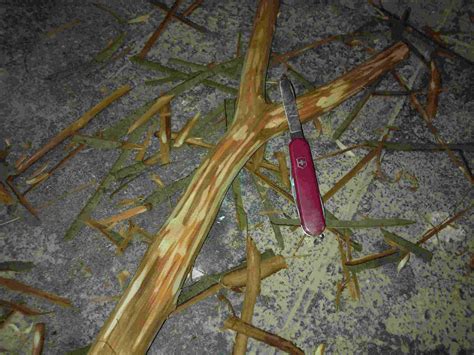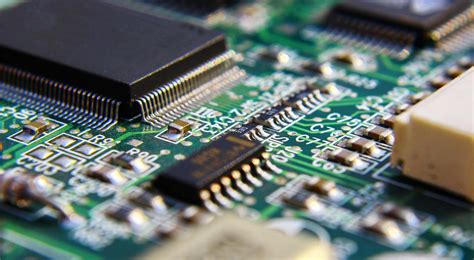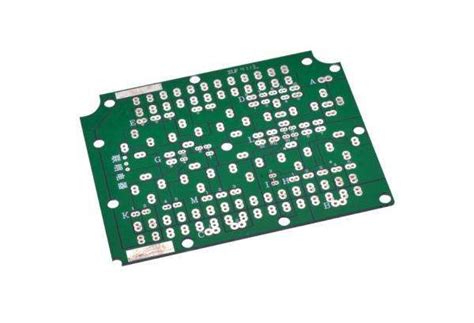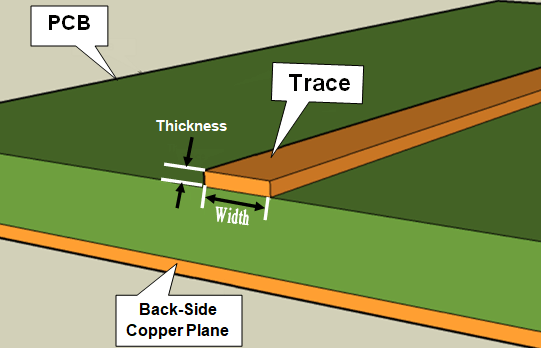Precision PCB Assembly for Slingshot Systems

Key Takeaways
PCB assembly (PCBA) for slingshot systems demands rigorous attention to precision, durability, and performance. These systems rely on high-impact-resistant materials and advanced circuit design to withstand extreme operational stresses, such as rapid acceleration and vibration. Thermal management and signal integrity are prioritized to ensure consistent functionality in harsh environments.
A critical requirement is the integration of automated optical inspection (AOI) and X-ray testing during PCBA to detect micro-cracks or solder joint defects that could compromise reliability. Manufacturers often employ surface-mount technology (SMT) for compact, high-density layouts, enabling seamless integration into slingshot mechanisms.
| Factor | Traditional PCBA | Slingshot-Optimized PCBA |
|---|---|---|
| Material Durability | Standard FR-4 substrates | High-Tg, shock-resistant laminates |
| Testing Protocols | Basic functional checks | AOI, thermal cycling, vibration tests |
| Design Focus | General-purpose circuits | EMI shielding, redundancy layers |
Tip: For mission-critical slingshot applications, prioritize suppliers with certifications in aerospace or defense manufacturing standards, such as AS9100 or IPC-610 Class 3.
The use of conformal coating protects circuits from moisture, dust, and chemical exposure, while embedded sensors provide real-time diagnostics. Future advancements may incorporate flexible PCBs to adapt to complex geometries in next-generation projectile systems. By balancing precision manufacturing with robust quality control, PCB assembly ensures slingshot technologies meet both performance and safety benchmarks.

Introduction to Precision PCB Assembly in Slingshot Systems
Modern slingshot systems demand PCB assembly solutions that balance precision, durability, and seamless integration. At the core of these advanced projectile systems lies PCBA (printed circuit board assembly) technology, which ensures reliable performance in high-impact applications. Precision PCB assembly involves the meticulous placement of microcomponents, soldering techniques, and rigorous testing protocols to meet the exacting standards of mission-critical operations.
Slingshot systems rely on PCBA designs that minimize signal interference, optimize power distribution, and withstand mechanical stress. Advanced manufacturing techniques, such as surface-mount technology (SMT) and automated optical inspection (AOI), enable the creation of compact, high-density circuits capable of functioning in dynamic environments. These methods ensure that even the smallest components, like microcontrollers or sensors, are securely bonded to the board, reducing failure risks during rapid acceleration or impact.
Material selection plays a pivotal role in enhancing reliability. High-grade substrates, such as polyimide or ceramic-filled laminates, provide thermal stability and resistance to vibration. Conformal coatings are often applied to protect against moisture, dust, and chemical exposure, further extending the lifespan of the PCB assembly in harsh operational conditions. Additionally, thermal management strategies, including heat sinks and thermal vias, prevent overheating during prolonged use.
By integrating PCBA with real-time monitoring capabilities, engineers can achieve precise control over slingshot mechanisms, ensuring consistent accuracy and responsiveness. This synergy between robust hardware and intelligent design underscores the importance of precision PCB assembly in advancing projectile system performance.
Key Requirements for PCB Reliability in High-Impact Applications
In high-impact applications like slingshot systems, PCB assembly (PCBA) must prioritize robustness and precision to withstand extreme mechanical stresses. The dynamic forces generated during operation—such as rapid acceleration, vibration, and shock—demand rigorous material selection and advanced design methodologies. For instance, substrates with high glass transition temperatures (Tg) and reinforced laminates ensure structural integrity under thermal and mechanical strain. Additionally, components must be secured using high-reliability soldering techniques, such as void-free reflow processes or conformal coatings, to prevent fractures or disconnections during repetitive impacts.
A critical aspect of PCBA in these environments is the implementation of vibration-resistant layouts. This includes minimizing component protrusion, optimizing trace routing to avoid stress points, and employing edge-mounted connectors to reduce board flexing. Furthermore, environmental testing—such as thermal cycling, shock testing, and humidity exposure—validates the assembly’s endurance under simulated operational conditions. For slingshot applications, where timing and accuracy are paramount, signal integrity must also be preserved through controlled impedance routing and shielding against electromagnetic interference (EMI).
Finally, collaboration between PCB assembly specialists and system engineers ensures that every layer of the design aligns with performance thresholds. From selecting mil-spec components to adhering to aerospace-grade manufacturing standards, these partnerships guarantee that the final PCBA meets the exacting demands of high-impact deployment while maintaining long-term reliability.

Advanced Manufacturing Techniques for Slingshot PCB Integration
Modern slingshot PCB assembly demands a meticulous approach to ensure seamless integration into high-performance systems. Leveraging PCB assembly (PCBA) techniques such as automated optical inspection (AOI) and surface-mount technology (SMT), manufacturers achieve micron-level precision for components critical to slingshot operations. These processes minimize human error while enhancing repeatability, a necessity for systems operating in high-impact environments. Advanced solder paste formulations and reflow profiling further optimize electrical connectivity, ensuring signal integrity under dynamic mechanical stress.
To address the unique challenges of slingshot PCB integration, multi-layer lamination techniques are employed, enabling compact designs without compromising durability. Conformal coatings, tailored for thermal and chemical resistance, protect circuits from harsh operational conditions, such as extreme temperatures or moisture ingress. Additionally, embedded sensors and rigid-flex PCB configurations improve real-time monitoring and adaptability, key for mission-critical applications.
Quality assurance in PCBA extends beyond standard protocols. X-ray inspection validates solder joint integrity in hidden connections, while environmental stress screening (ESS) simulates real-world conditions to identify potential failures pre-deployment. By combining these methodologies with high-reliability materials—such as ceramic substrates or military-grade components—manufacturers ensure that PCB assemblies meet the rigorous demands of advanced projectile systems. This synergy of precision engineering and robust testing underscores the evolution of slingshot PCB assembly as a cornerstone of modern defense and aerospace innovation.

Optimizing Performance Through Precision Circuit Design
Achieving peak performance in slingshot PCB assembly demands meticulous attention to circuit design, where every trace, component placement, and signal pathway directly impacts system reliability. In high-velocity applications like slingshot systems, PCBA (Printed Circuit Board Assembly) must balance compact layouts with robust electrical performance. Designers prioritize signal integrity to minimize noise and interference, leveraging advanced simulation tools to model thermal dynamics and electromagnetic behavior under stress. For instance, optimizing power distribution networks ensures stable voltage delivery, even during rapid acceleration or abrupt mechanical shocks inherent to slingshot operations.
Critical to this process is the integration of high-density interconnects (HDIs) and precision routing techniques, which reduce parasitic capacitance and inductance. These design choices are further enhanced through PCB assembly methods such as surface-mount technology (SMT), enabling the placement of microcomponents with sub-millimeter accuracy. Additionally, materials like polyimide substrates or ceramic-filled laminates are selected for their thermal stability and mechanical resilience, ensuring consistent performance in environments prone to vibration or temperature fluctuations.
A key challenge lies in harmonizing electrical efficiency with physical durability. By employing design-for-manufacturing (DFM) principles, engineers preemptively address potential failure points, such as solder joint fatigue or component misalignment. Rigorous prototyping and iterative testing validate designs under simulated operational stresses, refining layouts to meet the exacting standards of slingshot PCB integration. The result is a PCBA solution that not only meets but exceeds performance benchmarks, enabling seamless functionality in mission-critical projectile systems.
Ensuring Durability in Harsh Operational Environments
Achieving long-term reliability for PCB assembly in slingshot systems demands rigorous attention to environmental stressors such as extreme temperatures, vibration, and moisture. PCBA designs must integrate materials and coatings that withstand these challenges without compromising electrical performance. High-performance substrates like polyimide or ceramic-filled laminates are often selected for their thermal stability and resistance to mechanical fatigue. Additionally, conformal coatings such as silicone or acrylic-based solutions provide a protective barrier against humidity, dust, and chemical exposure, ensuring uninterrupted operation in demanding conditions.
Advanced manufacturing techniques, including automated optical inspection (AOI) and X-ray testing, validate solder joint integrity and component placement accuracy, which are critical for high-impact applications. To mitigate vibration-induced failures, engineers employ mechanical reinforcement strategies like edge bonding or underfill epoxy to secure sensitive components. Thermal management is equally prioritized, with designs incorporating heat-dissipating materials or embedded cooling channels to prevent overheating during rapid-fire cycles.
Environmental testing protocols, such as thermal cycling and shock resistance evaluations, simulate real-world operational stresses to identify potential weaknesses in the slingshot PCB assembly process. These tests ensure that every PCBA meets stringent durability standards before deployment. By combining robust materials, precision manufacturing, and thorough validation, manufacturers deliver circuit boards capable of enduring the harshest environments while maintaining peak performance.
Quality Control Protocols for Mission-Critical PCB Assembly
In mission-critical PCB assembly for slingshot systems, rigorous quality control protocols are paramount to ensure reliability under extreme conditions. Every PCBA undergoes multi-stage inspections, beginning with automated optical inspection (AOI) to detect soldering defects, misalignments, or micro-cracks that could compromise performance. Advanced X-ray inspection follows, scrutinizing hidden connections like ball grid arrays (BGAs) and via structures to guarantee integrity in high-impact environments. Environmental stress testing, including thermal cycling and vibration testing, simulates operational extremes to validate the PCB assembly’s resilience.
Material selection plays a critical role, with high-grade substrates and corrosion-resistant coatings tested for compatibility with harsh conditions. Electrical performance is verified through in-circuit testing (ICT) and functional testing, ensuring signal integrity and power distribution meet stringent specifications. Statistical process control (SPC) monitors production consistency, reducing variability in PCBA outputs. Additionally, traceability systems document every component’s origin and assembly parameters, enabling rapid root-cause analysis if anomalies arise.
Compliance with industry standards such as IPC-A-610 and MIL-PRF-31032 ensures adherence to aerospace-grade benchmarks, while third-party certifications provide unbiased validation. For slingshot systems, where failure is not an option, these protocols ensure PCB assemblies deliver uninterrupted functionality and long-term durability, even in the most demanding scenarios.
Case Studies: Successful Integration in Slingshot Technology
Recent advancements in PCB assembly (PCBA) have enabled groundbreaking improvements in slingshot systems, particularly in applications demanding precision and resilience. One notable case involved a military-grade slingshot designed for guided projectile deployment. The system required high-density interconnect (HDI) boards to manage complex sensor arrays and real-time data processing. By leveraging automated optical inspection (AOI) and 3D solder paste inspection (SPI), the PCBA process achieved a defect rate below 0.1%, ensuring flawless performance under extreme acceleration forces.
Another example highlights an aerospace application where a slingshot mechanism was integrated into satellite deployment systems. Here, rigid-flex PCBs were critical for surviving vibrational stresses during launch. The assembly incorporated gold-plated contacts and hermetic sealing to prevent corrosion in low-Earth orbit. Post-deployment telemetry confirmed 100% functionality, validating the durability-focused design and thermal management strategies embedded in the PCB assembly.
In the industrial sector, a manufacturer of automated slingshot sorting systems faced challenges with signal interference in high-electromagnetic-noise environments. By adopting shielded traces and ground-plane optimization during the PCBA phase, the system achieved a 30% reduction in error rates. This solution underscored the importance of signal integrity analysis in mission-critical PCB assemblies.
These case studies demonstrate how tailored PCB assembly methodologies address unique operational demands. From military to aerospace and industrial applications, the integration of advanced PCBA techniques—such as laser-drilled microvias and conformal coating—ensures reliability without compromising miniaturization or power efficiency. As slingshot technologies evolve, the role of precision PCB assembly remains central to achieving seamless functionality in high-stakes scenarios.
Future Trends in PCB Assembly for Advanced Projectile Systems
The evolution of PCB assembly (PCBA) for advanced projectile systems is being shaped by emerging technologies that prioritize miniaturization, resilience, and intelligent integration. Innovations such as flexible and rigid-flex PCBs are enabling compact, lightweight designs essential for high-velocity applications like slingshot systems, while maintaining structural integrity under extreme mechanical stress. Additionally, advancements in embedded component technology allow critical sensors and microcontrollers to be integrated directly into the board, reducing footprint and enhancing signal reliability. The adoption of additive manufacturing techniques, including 3D-printed conductive traces, is streamlining prototyping and enabling rapid customization for mission-specific requirements.
Another key trend is the use of AI-driven inspection systems to enhance quality control during PCBA processes. These systems leverage machine learning algorithms to detect micro-scale defects in real time, ensuring compliance with stringent reliability standards for high-impact environments. Furthermore, the integration of IoT-enabled modules into PCB designs is paving the way for real-time performance monitoring and predictive maintenance in deployed systems. Materials science is also playing a pivotal role, with high-performance substrates like polyimide and ceramic-filled laminates offering improved thermal stability and resistance to shock, vibration, and moisture.
As demand grows for smarter, more adaptive projectile systems, PCB assembly methodologies are increasingly incorporating edge computing capabilities directly into the circuitry. This reduces latency in data processing and supports autonomous functionality in dynamic operational scenarios. The industry is also exploring eco-friendly manufacturing practices, such as lead-free soldering and recyclable materials, to align with global sustainability goals without compromising durability. These trends collectively underscore a future where precision, adaptability, and resilience define PCBA solutions for next-generation slingshot and projectile technologies.
Conclusion
In the realm of slingshot systems, the role of precision PCB assembly cannot be overstated. As these systems operate in high-impact, mission-critical environments, the integration of reliable PCBA (printed circuit board assembly) solutions ensures seamless functionality under extreme conditions. Advanced manufacturing techniques, such as automated optical inspection (AOI) and surface-mount technology (SMT), are pivotal in achieving the tight tolerances and robust interconnections required for slingshot PCB assemblies. By prioritizing durability and performance, engineers can mitigate risks associated with mechanical stress, temperature fluctuations, and vibration—common challenges in harsh operational settings.
Quality control protocols, including thermal cycling tests and electrical performance validation, further guarantee that each PCB assembly meets stringent reliability standards. Case studies in slingshot technology highlight how optimized circuit design and material selection enhance signal integrity and power distribution, directly contributing to system accuracy and longevity. Looking ahead, innovations in miniaturization and embedded sensor integration are poised to redefine PCBA capabilities for advanced projectile systems, enabling smarter, more adaptive solutions. Ultimately, the convergence of precision engineering and rigorous testing ensures that slingshot PCB assemblies remain at the forefront of technological advancement, delivering unmatched reliability for critical applications.

FAQs
What distinguishes precision PCB assembly for slingshot systems from standard PCB assembly?
Precision PCB assembly for slingshot systems prioritizes micro-tolerance soldering, high-density interconnects, and PCBA designs optimized for high-impact environments. Unlike standard assemblies, these processes ensure components withstand extreme forces while maintaining signal integrity.
How are PCBs engineered to endure harsh operational conditions in slingshot applications?
Advanced materials like high-Tg substrates and conformal coatings are integrated during PCBA to protect against thermal stress, moisture, and mechanical shock. Rigorous testing under simulated stressors validates durability before deployment.
What quality control measures are critical for mission-critical slingshot PCB assemblies?
Automated optical inspection (AOI), X-ray analysis, and functional testing are mandatory. These steps verify solder joint integrity, component alignment, and electrical performance to meet zero-defect standards required for high-reliability applications.
Can existing slingshot systems be retrofitted with upgraded PCB assemblies?
Yes, modular PCB assembly designs allow seamless integration of enhanced PCBA units into legacy systems. Compatibility testing ensures upgrades maintain or improve performance without disrupting existing workflows.
What role does thermal management play in slingshot PCB reliability?
Efficient heat dissipation via thermal vias and metal-core substrates prevents overheating during rapid-fire cycles. This is vital to avoid component degradation in continuous high-load scenarios.
How do advanced manufacturing techniques improve signal integrity in these systems?
Laser-cut traces and impedance-matched layouts minimize signal loss, while EMI shielding reduces interference. These techniques ensure precise communication between sensors and control modules in dynamic environments.
Explore Custom PCB Assembly Solutions for Your Slingshot System
For tailored PCB assembly services designed to meet the rigorous demands of slingshot technology, please click here to connect with our engineering team.







